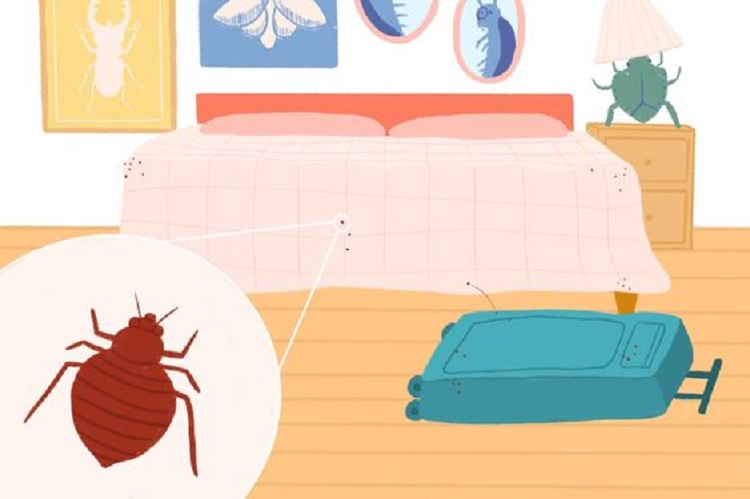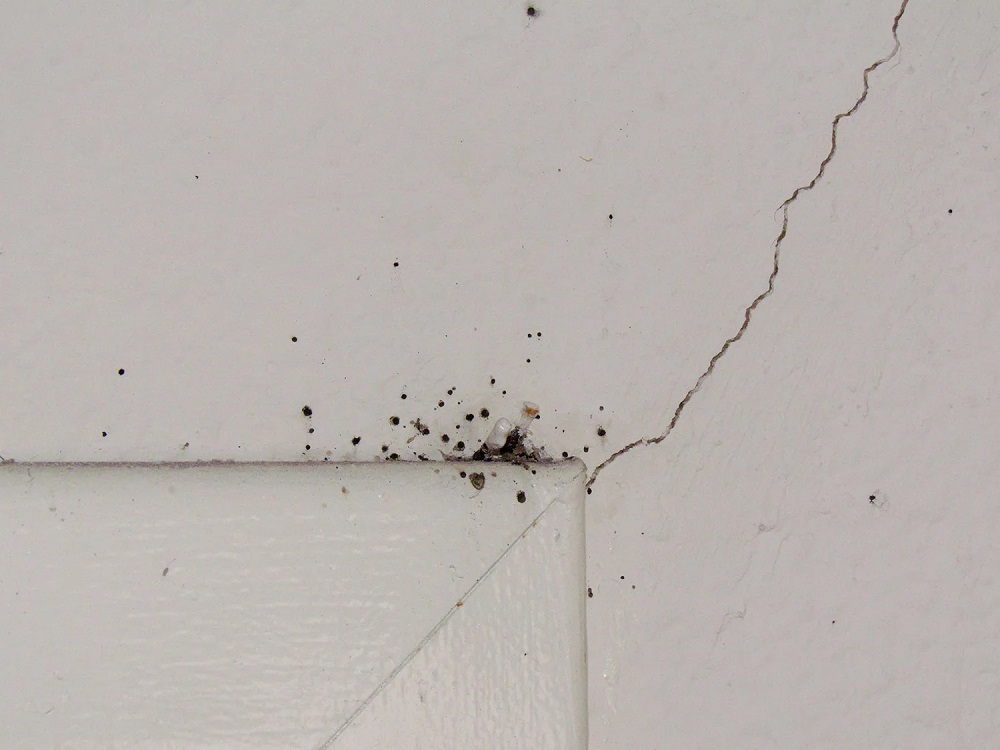Apartment complexes are becoming more and more appealing as housing options, but the huge influx of people has created some problems. They are most frequently discovered in beds, furniture, carpets, mattresses, and other places where people rest or sleep. Although bed bugs don’t often transmit diseases, their bites can be painful and uncomfortable. Bed bugs travel between flats should especially worry people because it might result in large infestations and expensive treatments.
What are bed bugs?
Bed bugs are tiny insects that live by feeding on human blood, usually at night. They remain hidden in cracks and crevices during the day, emerging only at night to forage. The bed bug bite is not painful and may or may not leave a red mark or cause itching.

From Where The Bed Bugs Came?
Small, reddish-brown insects known as bedbugs invade homes and keep many people awake at night. But from where do these tenacious parasites originate? Bedbugs can be found in various locations, not just in one place. They have been around for a very long time and have evolved to coexist with people.
Several things can give rise to bedbugs. Hotels, motels, and public transit can get infested since they can travel on baggage, clothing, or furniture. They may also infest used furniture or objects brought into a house without inspection. Because bedbugs can pass through walls, outlets, and plumbing, apartments and other shared living spaces are particularly prone to infestations.
Additionally, guests who have infestations in their residences or those who have just returned from a trip and unwittingly carried bedbugs with them can introduce bedbugs. Regardless of where they come from, looking for bedbug infestations and taking preventive measures to reduce the risk is critical.
How do bed bugs get into my apartment?
In apartments, bed bugs are no longer a rare pest. In the United States, bed bugs have made a comeback as a significant issue since around 2000. Sometimes infected luggage from a hotel or hostel brings bed bugs into a flat. Bed bugs in apartment buildings are likely to infiltrate a residence through a neighboring afflicted apartment after moving or when acquiring used or recycled furniture or mattresses. Bed bugs are easily transmitted from one afflicted flat to another once they have been introduced into a building of apartments.

Characteristics of Bed Bugs
Bed bugs (scientific name: Cimex lectularius) are small, wingless insects that belong to the family Cimicidae. The following are some salient features of bed bugs:
1. Small, wingless insects with flat, oval-shaped bodies are bed bugs.
2. They have a reddish-brown color that gets darker after they consume blood.
3. The length of an adult bed bug ranges from 4 to 5 millimeters
4. Being mainly nocturnal, they prefer to eat blood at night.
5. Bed bugs have a remarkable capacity for hiding out in tiny crevices and cracks during the day.
6. They are drawn to the warmth and carbon dioxide that people emit.
7. Although bed bugs can climb and crawl on various surfaces, they cannot fly or jump.
8. Females quickly reproduce, producing hundreds of tiny eggs for their lifetime.
9. The eggs develop into nymphs, who go through multiple molts before adulthood.
10. Being resilient and versatile, bed bugs may live in various settings and climates.
Bed Bug Life Cycle
· 1mm eggs.
· 1st stage nymph (1.5 mm).
· 2 mm long second-stage nymph.
· 3rd stage nymph (2.5 mm).
· 4th stage nymph (3 mm).
· 4.5 mm fifth stage nymph.
· Unfed adult female.
· Male adult not eating.
What symptoms indicate a bed bug infestation?
A raised, swelling bump on the skin with a clear center typically characterizes the initial physical and painful indication of the condition. The lump normally stings and feels scorching. This is due to the bedbugs’ mouth parts, which saw into the skin when feeding, causing it to bleed. During sleep, the pimples may appear on any exposed skin.
Blood stains on pillows or bedclothes might also indicate a bedbug infestation. These could arise from bedbugs getting squished when you toss and turn in your sleep.
Bedbug excretion can sometimes be found on bed linens and pillows as well. These will show up as rusty or dark brown markings. Egg shells and lost skin can also be discovered as proof of their infestation in locations where they conceal themselves, such as bed frames or cracks and crevices.
Last but not least, bedbugs release a strong, musty odder from their glands. This is yet more sign that they are there.

When Do Bed Bugs Travels?
A mature bed insect can move four feet in one minute. Most of their migration occurs at night, and they are forced to move on if their sponsor is no longer nearby (gone on vacation or moved out) or if the population of bed bugs becomes too large. The most mobile bed bugs would be adult females.
In many cases, bed bugs travel to new sites without exerting any energy. The renowned hitchhikers would creep inside handbags, backpacks, totes, and other items before being carried to a new residence. A foundation insect always accompanied the trip when you visited your neighbor across the hall or she visited you. You might be dealing with a foundation bug infestation if the girl who moved in a few weeks ago was a female foundation insect carrying eggs.
Bed Bugs Treatment
Treatment comprises the following and is aimed at symptom relief:
1. topical creams to reduce itching, such as cortisone
2. Take an oral antibiotic if an infection develops due to skin irritation near the bite.
3. if someone experiences a severe allergic reaction, corticosteroids
4. antihistamines, which can be used to treat allergic reactions
Most bed bugs travel bites recover between 1 and 2 weeks after they occur.
Cortisone and antihistamines are two of these medications that can be bought online.
How Do I Stop Bed Bugs From Traveling Throughout My House?
It would help if you adopted a proactive and thorough strategy to prevent bed bugs from spreading throughout your home. You can do the following important steps:
Early detection: Check your bedding, mattresses, and furniture frequently for indications of bed bugs, such as blood stains, dark spots, or exoskeletons that have been shed. Early detection of them can limit their growth.
Isolate infected goods: To prevent bed bugs from spreading, isolate any infected items immediately in sealed plastic bags. Be careful when moving infected things about your home.
Vacuum regularly: Regularly hoover your home, paying close attention to cracks and seams in furniture and areas close to your bed. Get rid of the Hoover bag or empty the canister outside your house in a sealed plastic bag.
Launder and heat-treat infested items: Infested things should be washed and heated: To kill bed bugs, clean bedding, linens, and clothing that has been infected in hot water (at least 120°F or 49°C) and then dry them on the hottest setting for at least 30 minutes.
Seek professional help: Consider hiring a pest control firm with knowledge of bed bug eradication if you have a recurring problem.

What Should I Do if My Apartment Neighbours Have Bed Bugs?
Insects can readily move from one apartment to another, which is one of the challenges of apartment living.
And regrettably, there is a good risk that you will acquire bed bugs if your neighbour does.
However, there are certain measures you may take to lessen the likelihood that bed bugs can infest your flat.
Conclusion
Bed bugs are hardy pests that can infest several apartments in a building by moving from one to the next. Together with shared areas, diseased furniture, and human movement, their propensity to hitchhike makes it essential to be on guard and take precautions. You may lessen the possibility of a bed bug infestation and safeguard your sound sleep by being proactive, checking derivative products, keeping your home clean, and interacting with your landlord and neighbours. Remember that early discovery and prompt intervention are essential to combat bed bed bugs travel infestations.




















